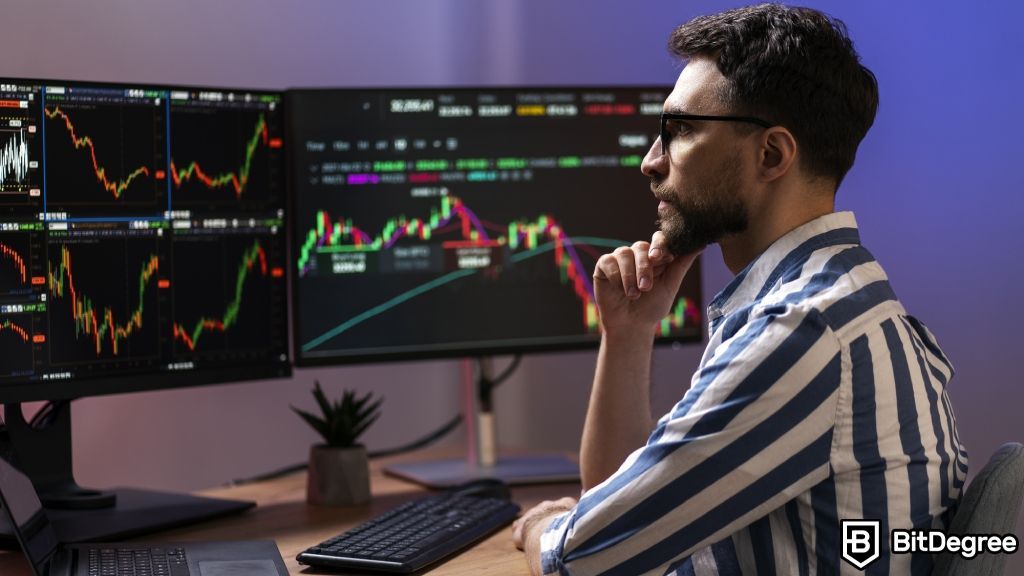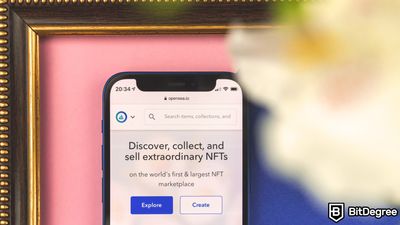Key Takeaways
- Understanding the basics of crypto futures trading is vital for diversification in today's investment landscape;
- Employing both long and short trading strategies can make a significant difference in trading outcomes;
- Factors like fees, user interface, and customer support are crucial when selecting a platform to engage in crypto futures trading;
- The use of a crypto futures trading bot and / or crypto futures trading signals offers opportunities for gains but comes with its own set of risks.
Free Airdrop Season 7 is LIVE! Answer fun questions or do simple tasks to earn rewards from the $30K BitDegree prize pool. Participate Now ! 🔥
The world of investing is always evolving. Once dominated by stocks and bonds, today's spotlight is on cryptocurrencies like Bitcoin and Ethereum. Though, as the crypto market matures, more and more ways of trading gradually emerge, such as crypto futures trading.
Major platforms like Binance, Bybit, and Kraken have rolled out futures trading tools, allowing crypto enthusiasts to navigate the volatile field with a bit more strategy.
If you've ever wondered what crypto futures trading is and how it differs from straightforward crypto trading, you're in the right spot. I'll try to demystify crypto futures trading for everyone, especially those intrigued by crypto futures trading for beginners.

Did you know?
Subscribe - We publish new crypto explainer videos every week!
What is Algorand? ALGO Coin Explained With Animations


Table of Contents
What is Crypto Futures Trading?
Crypto futures trading essentially is a financial agreement that allows traders to speculate on the future price movements of cryptocurrencies like Bitcoin, Ethereum, and Litecoin. In other words, you're making an educated guess about whether a particular cryptocurrency's price will go up or down at a specified future date.
Latest Deal Active Right Now:Head to BitDegree Missions, gather as many Bits as possible & claim your stake of the $30,000 Prize Pool! Don't waste your time & start collecting Bits by completing Missions and referring friends.
The key difference between futures trading and simply buying and selling cryptocurrency is the contract involved. When you engage in crypto futures trading, you're dealing with a binding agreement that outlines the terms of the trade, rather than owning the actual cryptocurrency.
So, what is futures trading crypto going to get you?
Well, this type of contract specifies details like the agreed-upon price and the expiration date, allowing you to potentially profit regardless of whether the market is bullish or bearish.
But how does it work?
When you decide to trade crypto futures, you'll need to open an account with an exchange that offers this type of trading. Once your account is set up, you can deposit funds and begin buying or selling contracts.
Here's where it gets interesting. When you buy a futures contract, you're agreeing to purchase a set amount of a cryptocurrency at a future date, for a price determined today. Conversely, when you sell a contract, you're agreeing to sell that cryptocurrency at a predetermined price on a specific date in the future.

But before getting into any details, let's talk about some key terms you'll frequently hear or read when doing your research on "what is futures trading crypto": contracts, leverage, and margin.
A contract is just an agreement between the buyer and the seller regarding all the transaction details. It specifies things like the type of cryptocurrency, its price, and the expiration date of the deal.
Leverage is another essential element in crypto futures trading. It allows you to control a larger position with a smaller amount of money. For example, with 10x leverage, you can control a $10,000 position with just $1,000 of your own money.
Sounds great, right? But it can be tricky. While leverage can amplify your profits if the market moves in your favor, it can also inflate your losses if things don't go as planned[1].
Then there's margin, which is closely related to leverage. It's the initial deposit you make to open a position. It acts as a kind of security deposit or collateral that you must maintain. If the market moves against you and your margin balance falls below a certain level, your position might be automatically closed, resulting in a loss.
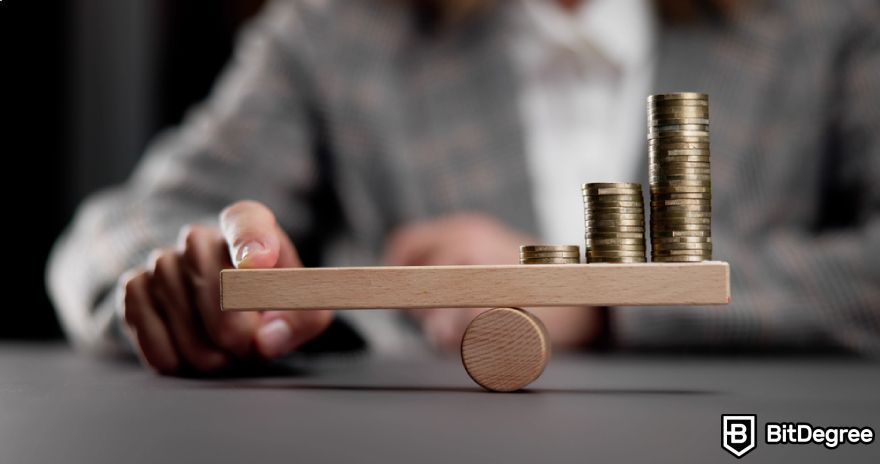
One pivotal aspect that often goes unnoticed is the role of liquidity in crypto futures trading. In a market that's as volatile as cryptocurrency, having ample liquidity means that you can enter or exit positions quickly without drastically affecting the market price.
Exchanges with higher liquidity, such as Binance, Coinbase, or Bybit, generally offer more favorable conditions for trading, reducing the spread between buying and selling prices.
In other words, liquidity makes it easier to execute your crypto futures trading strategies effectively and could be a deciding factor in whether you make a profit or incur a loss.
Exercise caution and always make sure you're well-informed before diving in, but don't let the apparent complexities deter you. You’ll soon know all the essential information you need to get started with crypto futures trading, setting you on the path to becoming a savvy trader.
Getting Started with Crypto Futures Trading
Now that you've got the basic concepts down, you're eager to dive into the world of crypto futures trading. I get it! This is a thrilling journey, and you're already wondering, "What is futures trading crypto gonna do for my portfolio?"
But before you set sail, there are a few critical points to keep in mind. These involve research, education, and a thoughtful approach to finding the best crypto futures trading platform for you.
Firstly, education is your best friend. The complexities of futures trading can feel overwhelming, particularly when it comes to crypto futures trading for beginners. This is where doing your homework pays off. Read insightful articles and watch tutorials.
Armed with knowledge, you can dig deeper. The more you understand the nitty-gritty of market indicators, the better equipped you'll be to make smart trading decisions.
Another cornerstone of getting started is selecting a reputable exchange. Some platforms offer a range of contracts and leverage options while maintaining a strong security protocol. Consider exchanges that are well-regarded in the industry, and always read reviews from other traders to gauge the credibility of the platform.
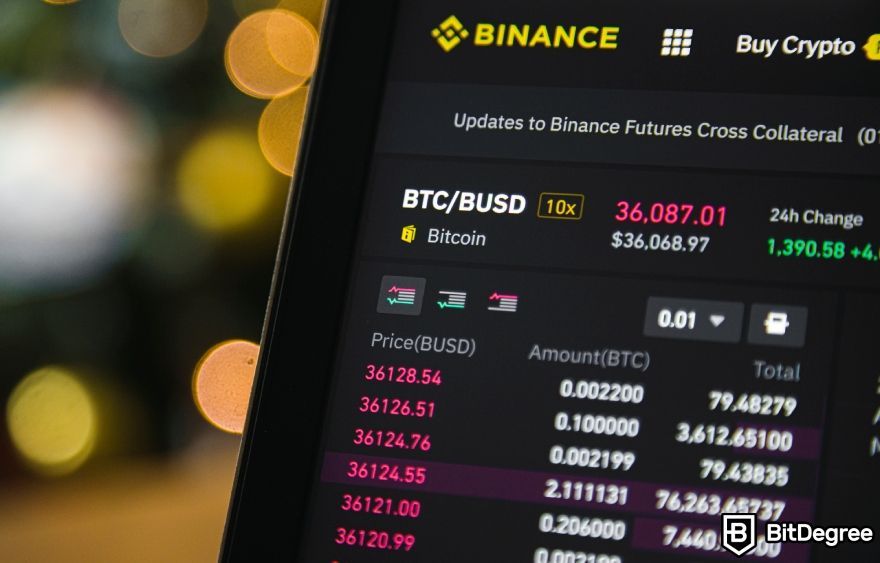
Once you've found an exchange that aligns with your needs and comfort level, go ahead and create an account. You'll need to deposit some funds, which can usually be done through a bank transfer, credit card, or directly with cryptocurrency.
After choosing an exchange and funding your account, the next step is getting familiar with the trading interface and the technical tools available to you.
Most exchanges offer a suite of analytics and charting tools that help you track market trends and make informed decisions. They enable you to spot tendencies or potential reversals in the market, enriching your trading strategy beyond mere intuition or guesswork.
Let's not underestimate the importance of starting small, especially if you're a beginner. Being cautious with your initial investments gives you the room to learn and make mistakes without jeopardizing your financial well-being. Use stop-loss orders to minimize risks and aim to lock in profits when you can.
The path to becoming proficient in crypto futures trading is a blend of knowledge, cautious decision-making, and a sprinkle of daring. Follow these guidelines, and you'll be well on your way to navigating the future of investing in the cryptocurrency world.
Choosing the Best Crypto Futures Trading Platform
Navigating the world of crypto futures trading platforms can seem overwhelming, but honing in on what's crucial for your trading style can make the task manageable.
First off, if you're planning to go long or short on your trades, ensure that the best crypto futures trading platform for you supports these strategies. This is particularly relevant when you're learning what futures trading crypto is all about.
Long trades bank on the price of the asset rising, while short trades aim to profit when prices fall. The availability of these features is a must for any trader looking to strategize around market movements.
However, the most critical factor when picking a platform is security. Given the number of high-profile hacks and security breaches in the crypto space, a platform with robust security features like two-factor authentication and cold storage for funds should be high on your list. Don't compromise on this when your funds are at stake.
Liquidity comes next. A high trading volume on the platform ensures you can enter and exit trades smoothly, minimizing slippage. This is particularly important when trading futures, where timing can be everything. Check out the liquidity metrics on the platform or third-party websites to get an idea of how easy it will be to execute your trades.

Also, let's not forget about crypto futures trading fees. Your earnings can be eroded quickly by high fees, so pay close attention to the fee structure of the platform. Some might offer lower fees for higher trading volumes, while others might provide a flat fee that makes it easier to calculate your potential profits or losses.
Besides all that, a reliable platform will allow you to set your leverage levels in accordance with your risk appetite. If you're in the realm of crypto futures trading for beginners, it's wise to start with lower leverage and scale up as you become more comfortable.
Extra features like advanced charting tools, paper trading, and educational resources can sweeten the deal. These are particularly beneficial for those who are still getting the hang of crypto futures trading for beginners.
Before making your final choice, consider reading user reviews online and maybe even test the platforms with low investments. These preliminary steps can provide invaluable insights into the user experience and functionality of the platform.
As a starting point for your search, here's a selection of the best crypto futures trading platforms as of writing:
- Binance. Recognized for low fees, very high liquidity, and having the Secure Asset Fund for Users (SAFU).
- Bybit. Offers a futures trading bot for you to automate your trading strategies.
- Kraken. Offers a variety of trading products and is known for being among the best when it comes to security.
- Coinbase. Popular for its user-friendly interface and strong security measures.
- KuCoin. Known for providing advanced order-matching technology in order to ensure trading always goes smoothly.
Nevertheless, whether you're ready to start investing in crypto futures trading right now or not, the platform you choose should align with your trading goals, risk tolerance, and feature needs. Whatever you choose, though, keep in mind that DYORing will always be an essential part of your crypto trading journey.
Crypto Futures Trading Strategies
When it comes to crypto futures trading, having a variety of strategies at your disposal can be a game-changer. Let's delve into some of the most popular techniques traders use to navigate this high-stakes arena.
Let's start with the basics: long and short crypto futures trading strategies.
Longing and Shorting
Going long means buying a futures contract with the expectation that the cryptocurrency's price will rise. You're essentially betting on upward momentum. On the flip side, shorting is selling a futures contract, betting that the asset's price will decline. In either case, the objective is the same: to profit from price changes.
Trend-Following
Trend-following is another crowd favorite. This strategy involves hopping on the bandwagon of an existing market trend – upward or downward – and riding it for as long as it lasts. While trend-following, you'll rely on technical indicators like moving averages to identify these trends. The key is to enter and exit at the right moments to maximize gains or mitigate losses.
Mean Reversion
Now, another noteworthy strategy is mean reversion, which caters best to patient investors. It involves waiting for a crypto asset's price to deviate significantly from its historical average and then expecting it to return to that average over time.

Mean reversion often involves using indicators like RSI (Relative Strength Index) to spot overbought or oversold conditions. When the indicators show a divergence from the norm, that's your cue to make a move.
Breakout
Moving further, a strategy that thrives on volatility is the breakout strategy. Here, you keep an eye on price levels that a cryptocurrency has struggled to move beyond, known as resistance and support levels.
When the price finally breaks through, it often results in a sharp price movement. The goal is to ride this momentum for profit, but timing is crucial.
Pullback
Pullbacks happen. Even in a robust trend, the price doesn't move in a straight line. The pullback strategy involves identifying these small reversals and using them as opportunities to enter the market, expecting the original trend to resume.
The idea behind the pullback strategy is to buy low during a brief dip in an overall upward trend or sell high during a small peak in a downward trend.
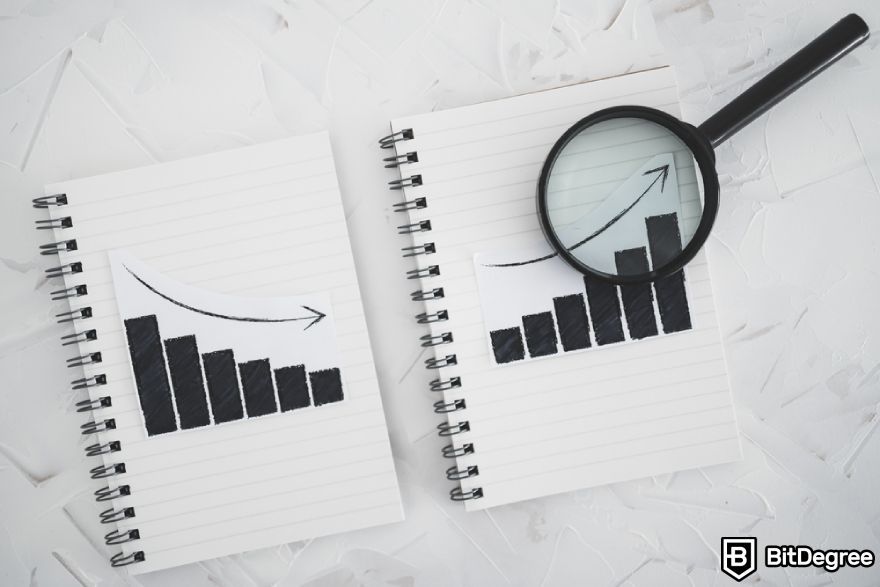
Overall, note that in the fast-paced world of crypto, market sentiment can shift quickly, often influenced by news events or regulatory changes. That's why it's essential to stay updated with current affairs that could impact the crypto market.
Monitoring reliable news sources and setting up news alerts specific to the cryptocurrencies you're trading can give you a leg up. This enables you to adapt your strategy based on real-time information, keeping you one step ahead in this competitive field.
Before you set out to discover what futures trading crypto is capable of doing, always remember these core principles. Regardless of which crypto futures trading strategies you decide to use, engaging with this type of trading will always require continual learning and discipline.
After all, futures trading is not a shady get-rich-quick scheme. It's more like a marathon where patience and persistence are rewarded.
Crypto Futures Trading Signals and Bots
Let's be honest, navigating the crypto futures trading market can feel like walking through a maze. This is where trading signals and bots come in, acting as navigational aids for traders looking to make more informed decisions or automate their operations.
Let's start with trading signals. Think of them as road signs that say "buy here" or "sell now". These crypto futures trading signals can be produced by seasoned human traders who rely on technical analysis or by software algorithms that analyze market trends and historical data[2].
Trading signals serve as recommendations for when you should buy or sell a crypto futures contract. They can land in your inbox, pop up in a Discord or Telegram channel, or even be part of a paid subscription service.
However, crypto futures trading signals won't do the work for you. You'll still need to pay attention to them, research their recommendation, and execute the trades in the best crypto futures trading platform for you.

But maybe you can't always pay attention to the signals you receive, or even don't want to go through the hassle of executing trades yourself, right?
That's where a crypto futures trading bot might step in. These software programs take pre-defined criteria and execute trades on your behalf.
Imagine having a robot chauffeur that drives you through the twists and turns of the market – because that's what a crypto futures trading bot is. These bots operate based on criteria like technical indicators, price movements, and even news events. Some bots are cloud-based for easy access, while others can be hosted on your own computer, requiring you to be a bit more tech-savvy.
However, in case you're after something on the beginner-friendly side, there are plenty of crypto futures trading bots out there for you, too. Binance trading bots, for example, are very easy to set up, and can even replicate profitable trading strategies. Then, after you get the gist of it, you can customize them, too.
Of course, it's not all smooth sailing. While using crypto futures trading signals and bots can offer the convenience of making your trading journey easier and more automated, they do come with their limitations.

For one, there's often a cost involved – either as a one-time purchase or a recurring subscription fee. Additionally, remember that futures trading can be tricky, and neither signals nor bots can promise guaranteed profits. Overdependence on these tools can be a pitfall, as they are not a substitute for DYORing and understanding market risks.
So, how do you make the best out of these tools?
First, look for proven track records and transparent operations when choosing a crypto futures trading bot or signal provider. Next, ensure the service you choose offers risk management features like stop-loss and take-profit options.
Trading signals and bots serve as valuable compasses in the intricate world of the crypto futures market. When it comes to using them, it's crucial to first backtest any trading strategy or bot on past market data before going live.
After that, be sure to continuously monitor your trades, so everything unfolds as planned.
Comparison with Other Trading Instruments
Crypto futures trading offers a unique set of opportunities and challenges compared to other investment instruments like spot trading, options trading, and cryptocurrency exchange traded funds (ETFs).
Understanding these differences can help you make an informed decision about which trading instrument best aligns with your investment goals and risk tolerance.
Firstly, let's consider spot trading, which is essentially the bread and butter of the crypto world. Here, you're buying or selling cryptocurrencies at their current market price.
The process of spot trading is straightforward, and you end up owning the actual cryptocurrency, offering you total freedom to hold, sell, or use it for transactions. However, spot trading without margin doesn't offer the ability to leverage your investment, nor does it allow you to profit from declining prices through shorting.

Options trading offers another route into crypto trading. Unlike futures, options give you the right but not the obligation to buy or sell at a certain price, offering more flexibility but also added complexity.
You can use options to speculate on future price movements or as a hedge against potential losses. However, the downside here is that options can expire worthless if the market doesn’t move in your favor, making them riskier for inexperienced traders.
Crypto ETFs are another investment tool, and they function somewhat like a hybrid between spot and futures trading. These exchange traded funds group together different cryptocurrencies or track a specific one, and provide investors with a way to diversify their portfolio while outsourcing some of their trading decisions.
ETFs offer a way to invest in crypto without the fuss of dealing with wallets and storage. However, you miss out on the higher profit potential that leverage from futures trading can bring.
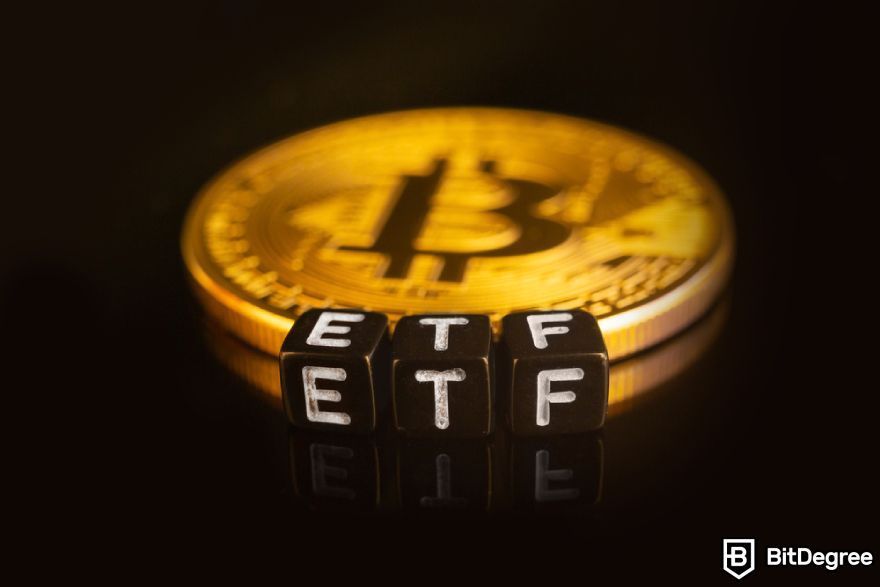
Now, let's talk about the advantages of crypto futures trading.
With futures, you can employ leverage to control a larger position with less upfront capital. While this can be profitable, the risks are amplified. You can also short cryptocurrencies, giving you the opportunity to earn even when the market is down.
Furthermore, futures can serve as a hedge against risk, a benefit you don't get with spot trading.
So, what's the right investment vehicle for you? Well, I'd say if you're new to crypto, it's probably best to start with a few spot trades because of their simplicity. Once you're comfortable with the market, futures trading could be the next step.
Whichever route you choose, make sure it aligns well with your financial goals and risk tolerance.
Conclusions
Crypto futures trading occupies a significant space in today's investment landscape, providing opportunities for traders with higher risk appetite. Because of that, it's essential to grasp the concepts that surround this type of crypto investment, like contracts, leverage, and margin.
If you plan to engage in futures trading, it's imperative that you choose the best crypto futures trading platform for you – be it Binance, Kraken, Bybit, or any other. Using those, you'll be able to execute trading strategies all by yourself or, alternatively, get help from trading bots and signal providers.
Nevertheless, tread carefully, make informed decisions, and never stop learning.
The content published on this website is not aimed to give any kind of financial, investment, trading, or any other form of advice. BitDegree.org does not endorse or suggest you to buy, sell or hold any kind of cryptocurrency. Before making financial investment decisions, do consult your financial advisor.
Scientific References
1. S. Spyrou: 'Index Futures Trading and Spot Price Volatility: Evidence from an Emerging Market';
2. F. Fang, C. Ventre, M. Basios, et al.: ‘Cryptocurrency Trading: A Comprehensive Survey'.

